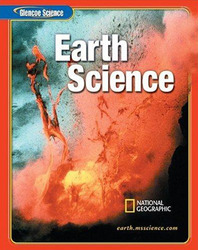1.
<a onClick="window.open('/olcweb/cgi/pluginpop.cgi?it=gif::::/sites/dl/free/0078617006/165465/517_538_q1.gif','popWin', 'width=NaN,height=NaN,resizable,scrollbars');" href="#"><img valign="absmiddle" height="16" width="16" border="0" src="/olcweb/styles/shared/linkicons/image.gif"> (4.0K)</a>
A) calcium B) chloride C) magnesium D) sodium 2.
A) carbon B) nitrogen C) hydrogen D) oxygen 3.
A) density B) buoyancy C) salinity D) temperature 4.
A) upwelling. B) a surface current. C) a density current. D) an ocean wave. 5.
A) a trough. B) a crest. C) the wavelength. D) the wave height. 6.
<a onClick="window.open('/olcweb/cgi/pluginpop.cgi?it=jpg::::/sites/dl/free/0078617006/165465/517_538_q6_q7.jpg','popWin', 'width=NaN,height=NaN,resizable,scrollbars');" href="#"><img valign="absmiddle" height="16" width="16" border="0" src="/olcweb/styles/shared/linkicons/image.gif"> (37.0K)</a>
A) north to south only B) clockwise C) east to west only D) counterclockwise 7.
<a onClick="window.open('/olcweb/cgi/pluginpop.cgi?it=jpg::::/sites/dl/free/0078617006/165465/517_538_q6_q7.jpg','popWin', 'width=NaN,height=NaN,resizable,scrollbars');" href="#"><img valign="absmiddle" height="16" width="16" border="0" src="/olcweb/styles/shared/linkicons/image.gif"> (37.0K)</a>
A) The Atlantic Ocean is deep. B) The oceans’ waters are constantly in motion. C) The Gulf Stream flows east to west. D) The oceans’ currents only flow in one direction. 8.
A) upwellings B) crests C) the Coriolis effect D) tides 9.
A) the gravitational pull of Earth on the Moon B) the gravitational pull of the other planets on Earth's water C) the gravitational pull of the Moon and the Sun on Earth's water D) the Coriolis effect 10.
A) a spring tide. B) a neap tide. C) a breaker. D) the tidal range.














